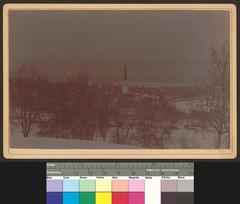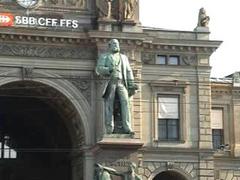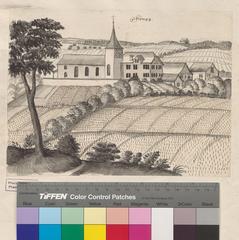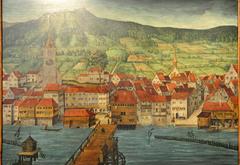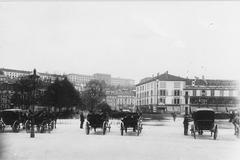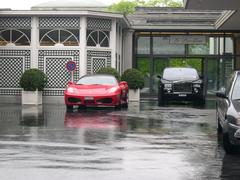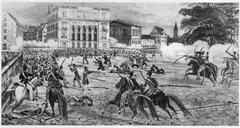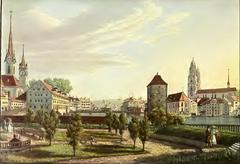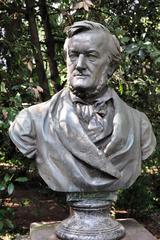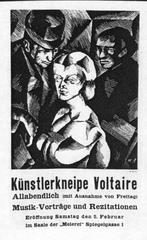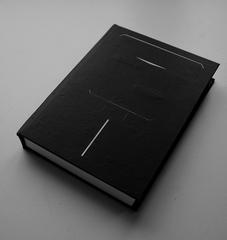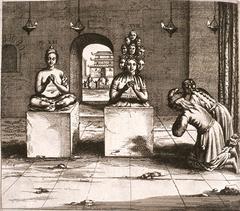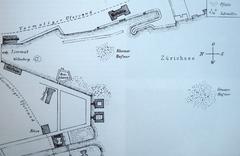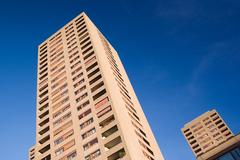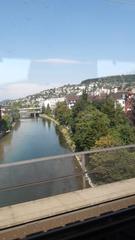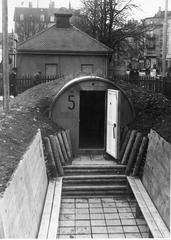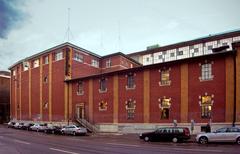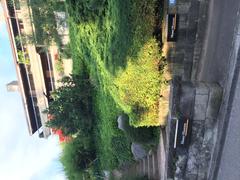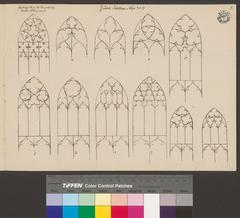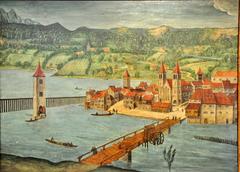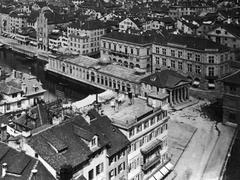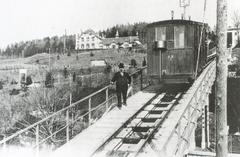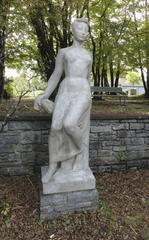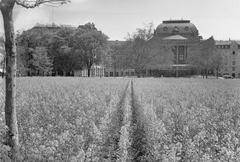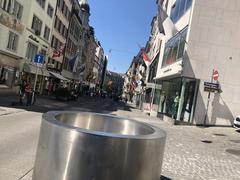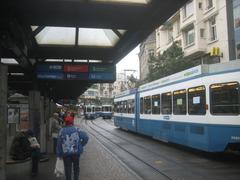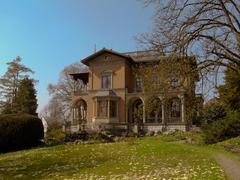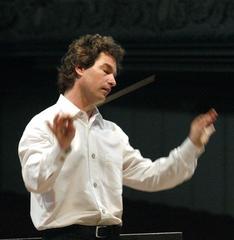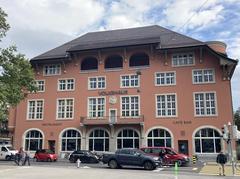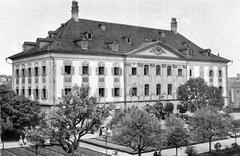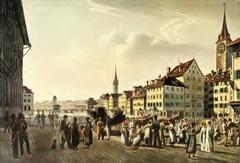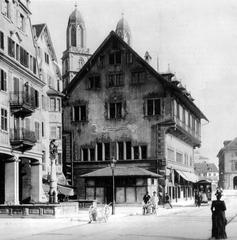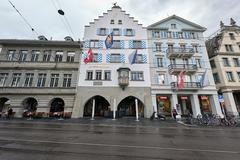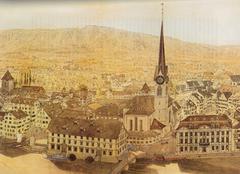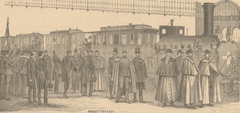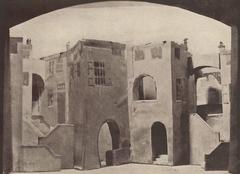
Comprehensive Guide to Visiting Lindenhof, Zürich, Switzerland
Date: 17/07/2024
Introduction
Nestled in the heart of Zürich, Switzerland, Lindenhof is a site steeped in history and cultural significance. This historic hill has been an integral part of Zürich’s landscape since the Roman era, providing visitors with a unique glimpse into the city’s storied past. Originally established around 15 BC as a Roman fortification known as ‘Turicum,’ Lindenhof served as a strategic military post due to its elevated position with commanding views of the Limmat River (Swissinfo). Over the centuries, it has evolved to become a symbol of unity, resilience, and cultural heritage for the people of Zürich.
During the early Middle Ages, Lindenhof was the site of a Carolingian royal palace, further cementing its significance in the region. It was here, in 1291, that representatives from the founding cantons of Uri, Schwyz, and Unterwalden met to pledge mutual support, marking the inception of the Swiss Confederation (MySwitzerland). Throughout the Reformation and into the modern era, Lindenhof has remained a focal point of Zürich’s historical and cultural landscape, adapting to the city’s transformations while preserving its rich heritage.
Today, Lindenhof is a serene public park, offering panoramic views of Zürich, remnants of its ancient fortifications, and a variety of cultural events. It is a cherished destination for both locals and tourists, providing a peaceful retreat in the bustling city. This guide aims to provide comprehensive visitor information, historical insights, and practical tips to ensure a memorable visit to Lindenhof.
Table of Contents
- Introduction
- Early Beginnings and Roman Influence
- Medieval Significance
- The Birth of the Swiss Confederation
- The Reformation and Beyond
- 19th and 20th Century Developments
- Modern-Day Lindenhof
- Architectural and Archaeological Highlights
- Cultural Significance
- Visitor Information
- FAQ
- Conclusion
Early Beginnings and Roman Influence
Lindenhof, a historic site in Zürich, Switzerland, has a rich history that dates back to the Roman era. The area was originally a Roman fortification known as “Turicum,” established around 15 BC. This fort served as a strategic military post due to its elevated position, which provided a commanding view of the Limmat River and the surrounding region. The Romans built a customs station here to control the trade routes and collect taxes from merchants passing through the area. Archaeological excavations have uncovered remnants of Roman baths and other structures, indicating the significance of Lindenhof during this period (Swissinfo).
Medieval Significance
During the early Middle Ages, Lindenhof continued to play a crucial role in the defense and administration of Zürich. In the 9th century, the Carolingian dynasty constructed a royal palace on the site, which served as a residence for the kings and a center for governance. This palace was part of a larger network of royal estates that helped consolidate the power of the Carolingian rulers across Europe. The Lindenhof hill thus became a symbol of royal authority and a focal point for the local community (Zürich Tourism).
The Birth of the Swiss Confederation
Lindenhof is also closely associated with the early history of the Swiss Confederation. In 1291, representatives from the three founding cantons of Uri, Schwyz, and Unterwalden met at the Lindenhof to renew their alliance and pledge mutual support against external threats. This event is considered a pivotal moment in the formation of the Swiss Confederation, marking the beginning of a unified Swiss identity. The oath taken at Lindenhof is commemorated in Swiss history as a symbol of unity and resistance against oppression (MySwitzerland).
The Reformation and Beyond
The Reformation in the 16th century brought significant changes to Zürich, and Lindenhof was no exception. Under the leadership of Huldrych Zwingli, Zürich became a center of Protestant reform, and Lindenhof played a role in the religious and political transformations of the time. The site was used for public gatherings and debates, where citizens discussed and decided on matters of faith and governance. The Reformation period also saw the decline of the medieval fortifications, as the city expanded and modernized (Zürich City Archives).
19th and 20th Century Developments
In the 19th century, Lindenhof underwent significant changes as Zürich transformed into a modern city. The area was redeveloped into a public park, providing a green space for residents and visitors to enjoy. The Linden trees, which give the hill its name, were planted during this period, creating a serene and picturesque environment. The park became a popular spot for leisure activities, offering stunning views of the city and the river.
During World War II, Lindenhof served as a lookout point for the Swiss military, who used the elevated position to monitor air traffic and potential threats. The site continued to hold strategic importance, reflecting its long history as a place of defense and observation (Zürich City Guide).
Modern-Day Lindenhof
Today, Lindenhof remains a cherished historical and cultural landmark in Zürich. The park is a popular destination for both locals and tourists, offering a peaceful retreat in the heart of the city. Visitors can explore the remnants of the Roman fortifications, enjoy the panoramic views, and learn about the site’s rich history through informational plaques and guided tours.
Lindenhof also hosts various cultural events and activities throughout the year, including open-air theater performances, historical reenactments, and community gatherings. These events celebrate the site’s heritage and bring its history to life for contemporary audiences (Zürich Events).
Architectural and Archaeological Highlights
One of the key attractions at Lindenhof is the Roman gravestone, which dates back to the 2nd century AD. This artifact provides valuable insights into the lives of the Roman inhabitants of Turicum and their burial practices. The gravestone is inscribed with Latin text, commemorating a Roman soldier who served in the region. It is a tangible link to the ancient past and a testament to the enduring legacy of Roman culture in Zürich (Swiss National Museum).
Another notable feature is the Carolingian wall, a remnant of the medieval fortifications that once protected the royal palace. The wall is an important archaeological site, offering a glimpse into the construction techniques and defensive strategies of the early Middle Ages. Visitors can walk along the wall and imagine the bustling activity of the royal court that once occupied the hill (Archaeological Service of the Canton of Zürich).
Cultural Significance
Lindenhof holds a special place in the cultural memory of Zürich. It is a symbol of the city’s resilience and adaptability, having witnessed and survived numerous historical upheavals. The site’s layered history, from Roman times to the present day, reflects the dynamic and evolving nature of Zürich itself.
The park is also a place of inspiration for artists, writers, and musicians. Its tranquil setting and historical ambiance have been captured in numerous works of art and literature, contributing to the cultural heritage of the city. Lindenhof continues to inspire creativity and serves as a reminder of the enduring connection between past and present (Zürich Cultural Office).
Visitor Information
- Ticket Prices: Entry to Lindenhof is free.
- Opening Hours: The park is open year-round, 24/7.
- Accessibility: The park is accessible to visitors with mobility impairments, although some areas may have uneven terrain.
Visitor Tips
For those planning to visit Lindenhof, it is recommended to allocate at least an hour to explore the site thoroughly. Comfortable walking shoes are advisable, as the terrain can be uneven in places. The park is accessible year-round, but the best time to visit is during the spring and summer months when the Linden trees are in full bloom.
Guided tours are available and provide a deeper understanding of the site’s history and significance. These tours often include visits to nearby historical landmarks, offering a comprehensive overview of Zürich’s rich heritage. Additionally, informational plaques and interactive displays are scattered throughout the park, providing context and background information for self-guided visitors (Zürich Tourism).
FAQ
- Q: What are the opening hours of Lindenhof?
- A: Lindenhof is open year-round, 24/7.
- Q: Is there an entry fee to visit Lindenhof?
- A: No, entry to Lindenhof is free.
- Q: Are guided tours available at Lindenhof?
- A: Yes, guided tours are available and provide a deeper understanding of the site’s history and significance.
Conclusion
In summary, Lindenhof is a must-visit destination for anyone interested in the history and culture of Zürich. Its unique blend of natural beauty and historical significance makes it a captivating and enriching experience for all who visit.
Visitors to Lindenhof can immerse themselves in the past by exploring its archaeological remnants, such as the Roman gravestone and Carolingian wall, while enjoying the breathtaking panoramic views of Zürich and the Limmat River. The site’s cultural significance is celebrated through various events and activities, making it a living landmark that bridges the gap between history and modernity.
For more information and updates on visiting Lindenhof, including upcoming events and detailed visitor tips, be sure to visit the Zürich tourism website.












